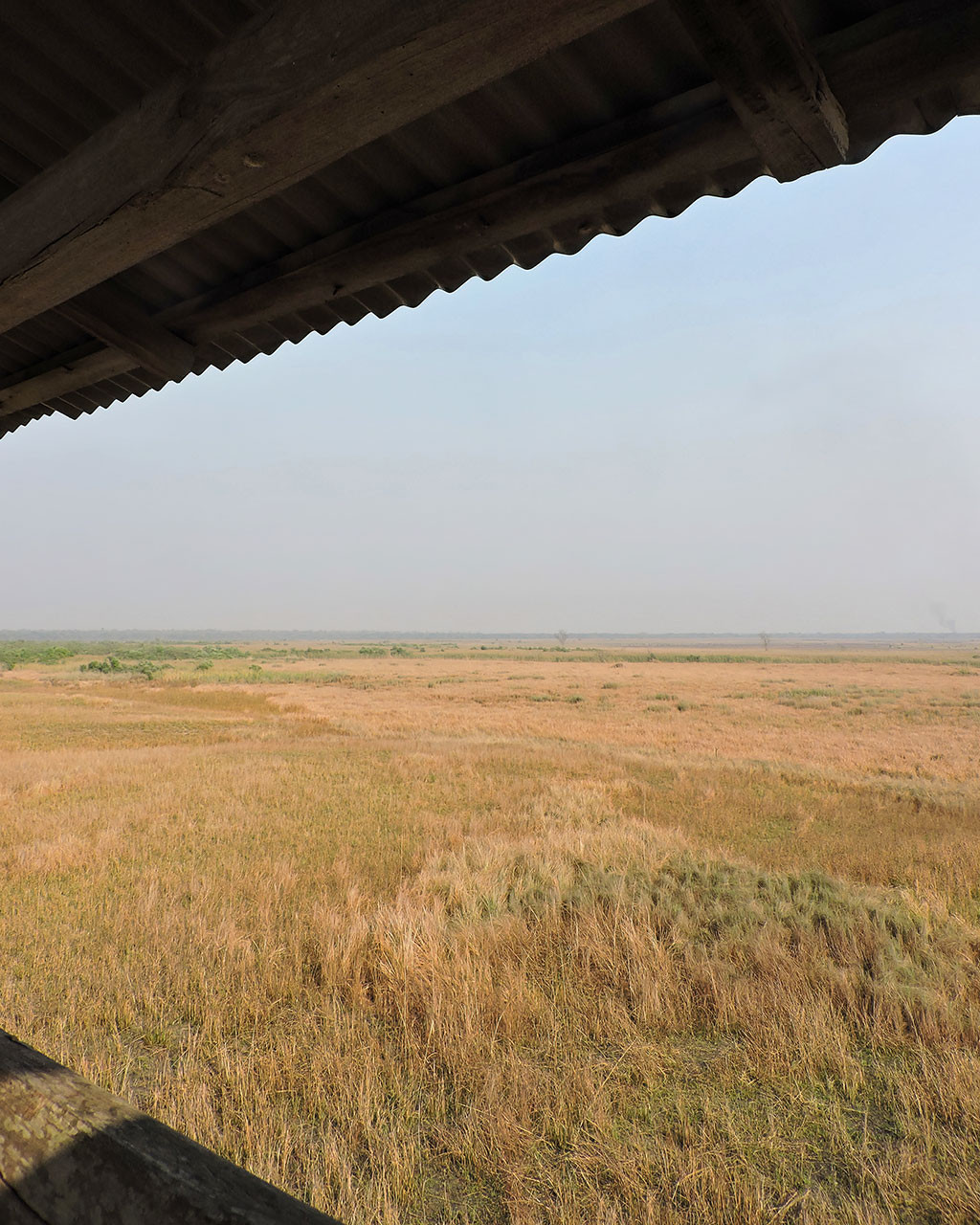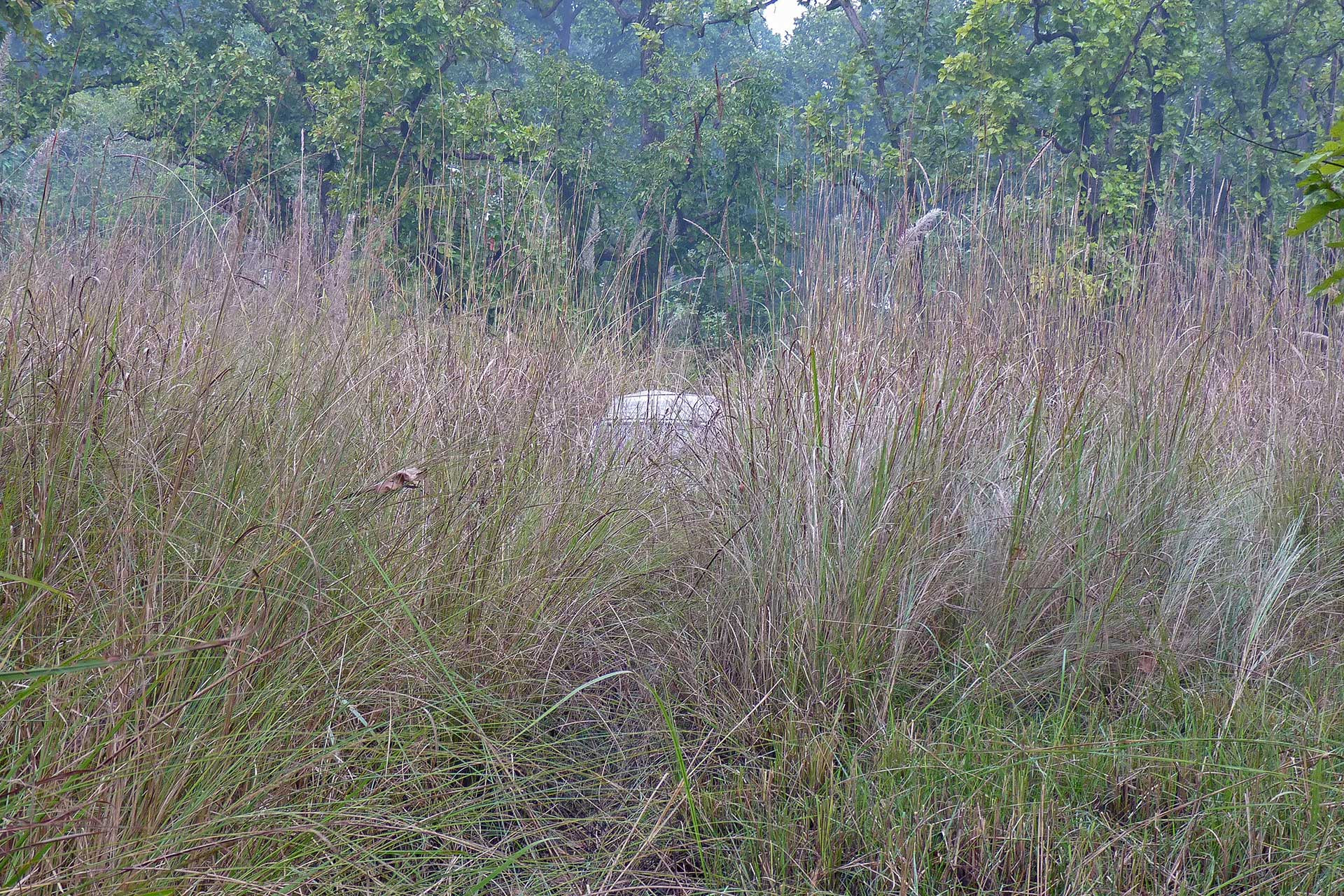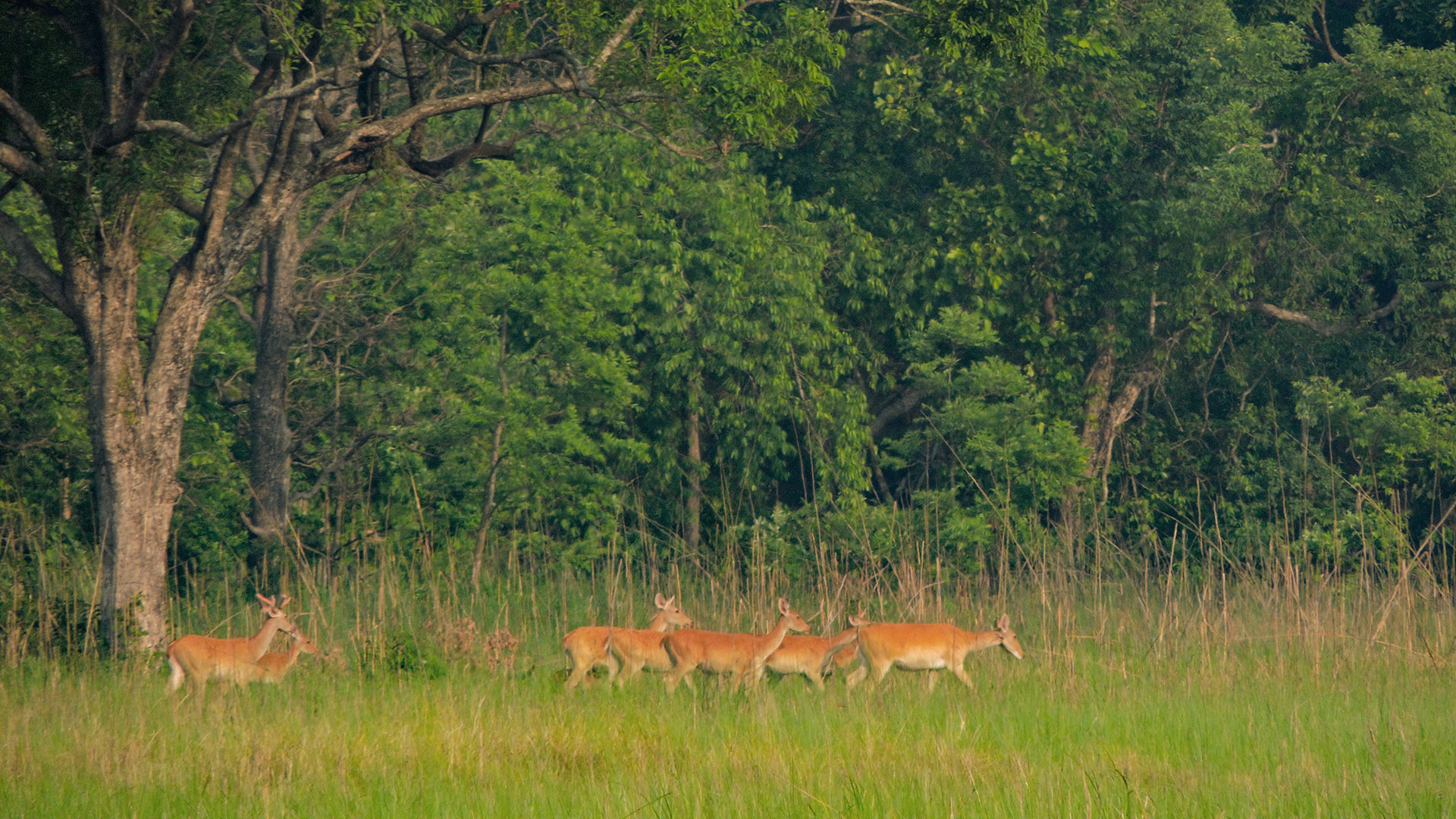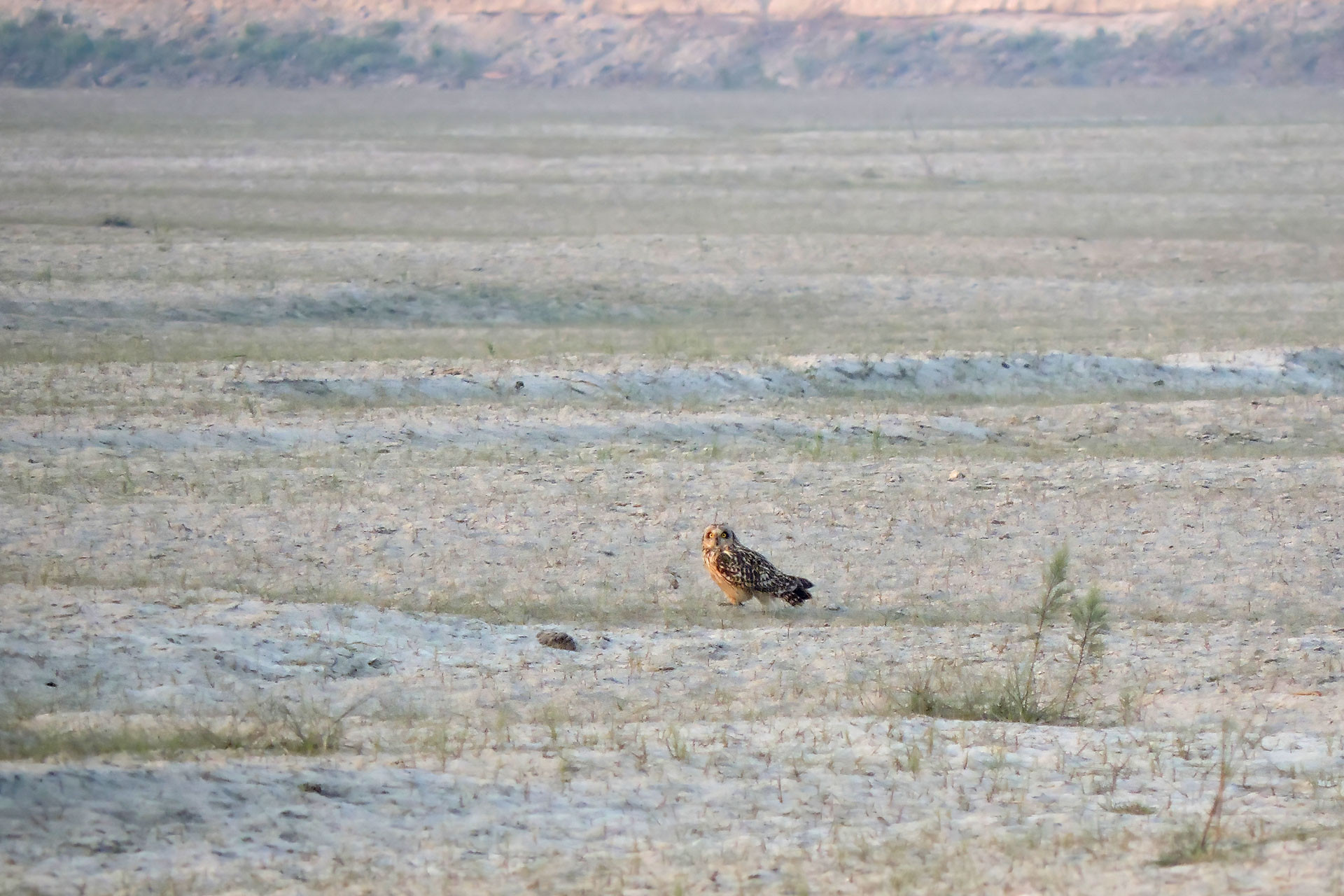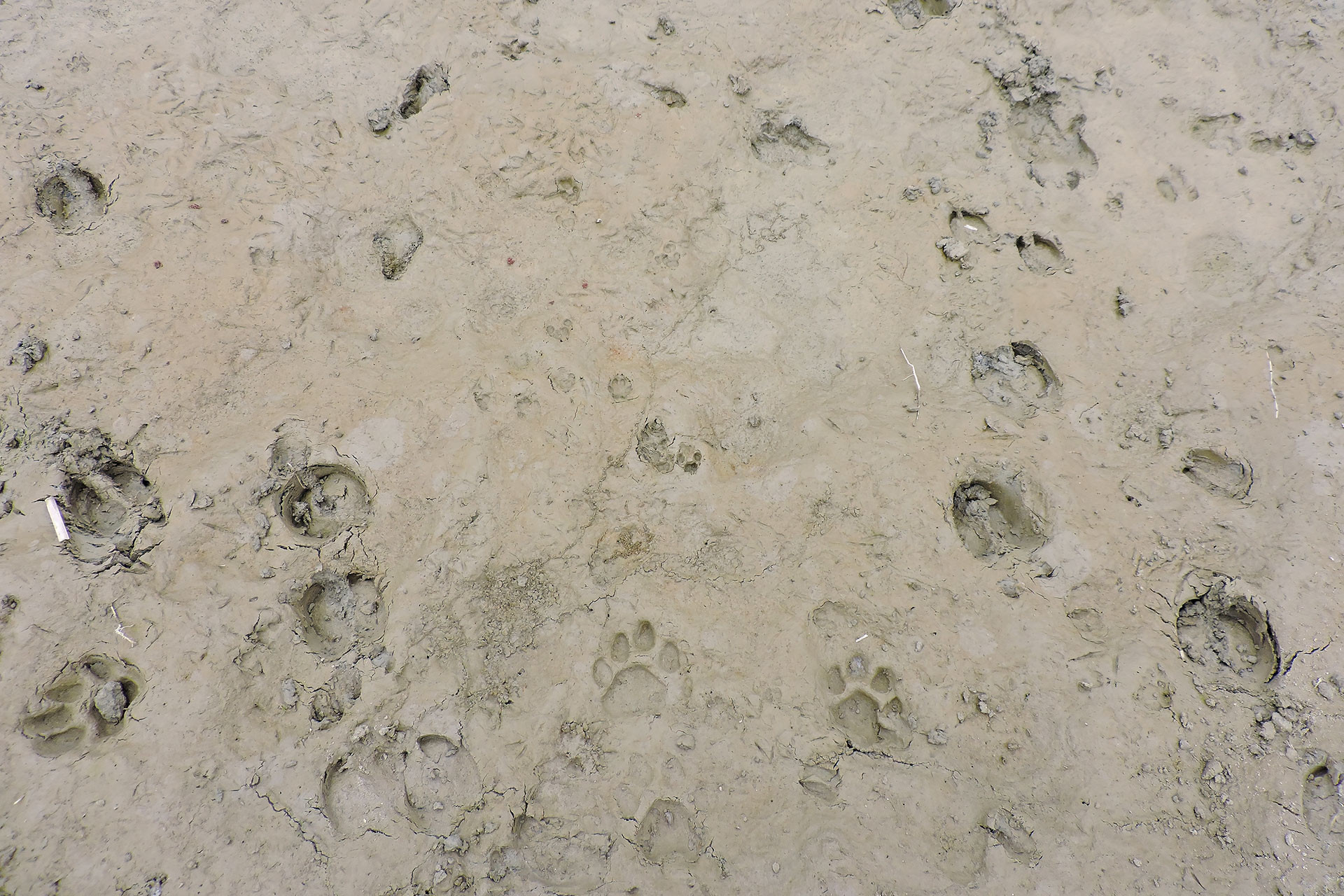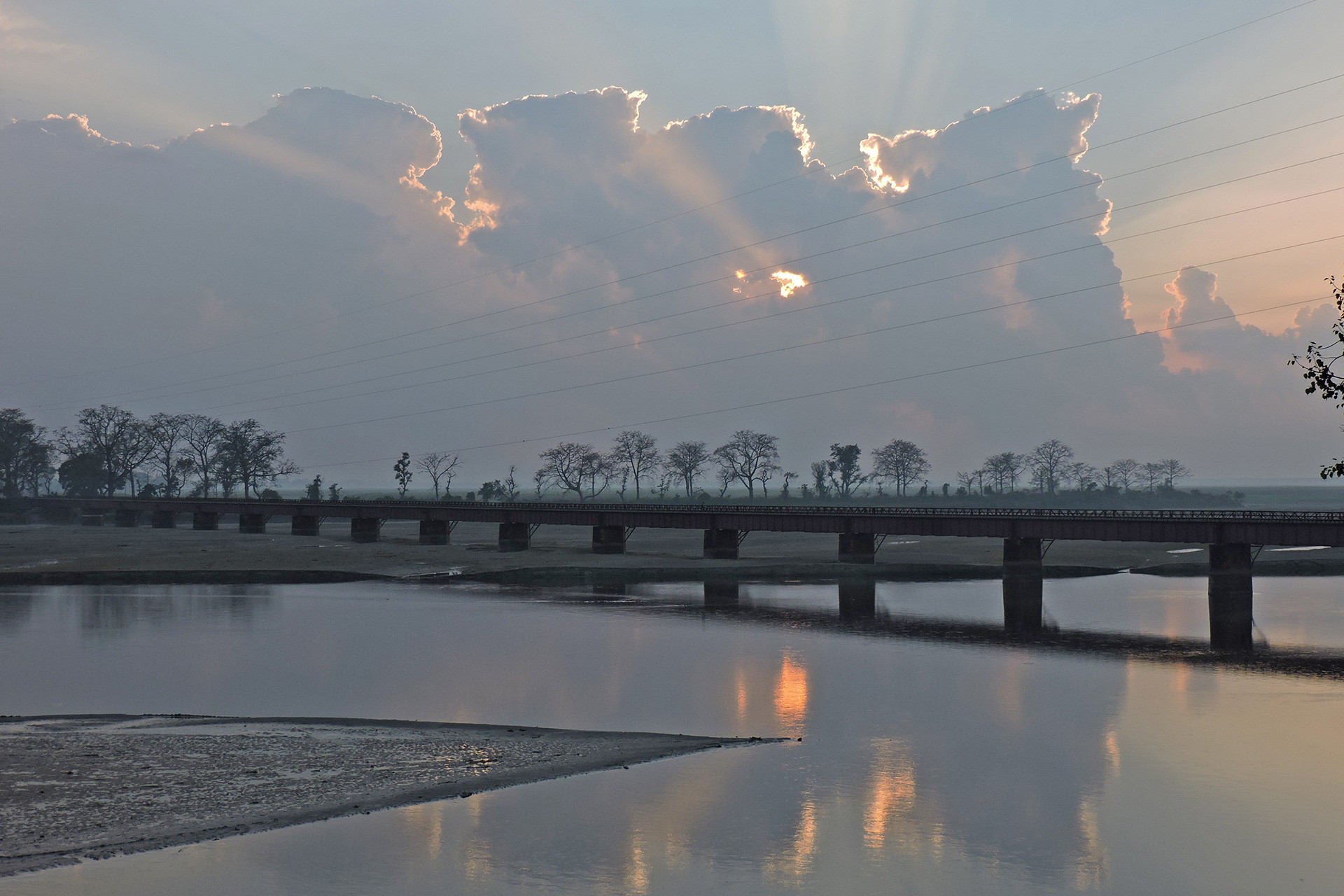I had never known a place whose name is an onomatopoeia, until we arrived in Boom. It is a speck of a town located on the banks of the Sharda river, north of Tanakpur, in Uttarakhand, India. In the early part of the twentieth century, the British logged the magnificent Sal forests that draped the hills in the area. The logged trees would then be dropped into the river off the high river banks from where they would make their way to saw mills downstream. The incessant booming sound of trees falling into the river is what gave the town its rather unusual name. Across the river, on its eastern bank, was Nepal. That evening, for the first time in my life, I set eyes on foreign soil. A sparsely wooded land with a few thatched homes, a rooster, some children, and a dog revealed themselves. Everything seemed to be marked by the passage of reams of time, except for the frolicking children, who stared back at us for a moment before fluttering away into the woods.
Chuka
In Boom, the Sharda hurries along high river banks. Her waters are emerald green and her depths, fathomless. For a while, we walked along her banks, looking for animal signs. All we found were shards of stories from places near and far—footprints of border patrol soldiers, broken beer bottles and plastic baubles. As we walked on, eyes glued to the sand, around us, the rugged Shivalik hills huddled and conspired to bring us into their folds. They cast their long shadows on the beach and sent a cold breeze rippling down the river, and we knew it was time to bid farewell to Boom. We joined the line of cars making their way north to our destination, the Poornagiri temple. As part of our wildlife surveys, our plan was to hike out from the temple to the village of Chuka that lies further upstream of Boom. Passing lush forests, villages and hills scarred by landslides we arrived at the temple compound amidst the clanging of bells and the chanting of evening prayers. Beyond our little campsite, at the edge of the temple compound, a Fire-tailed Sunbird frantically inspected bunches of wild flowers. With every wing beat and artful swish of its tail, it lent the horizon a bit of its colour. The sky streaked red, then splashes of orange appeared, and then growing patches of inky blue into which disappeared the distant mountains, the Chir pines and eventually the sunbird.
The next morning, we set out for Chuka with our eyes peeled to the ground, enumerating the signs of those who walked before us. Along the way, we passed the desolate but beautiful village of Kot Kendri, perched high up on a hill. The ornate doorways of its abandoned homes betrayed stories of a time very different from those narrated by its fallow, weed-ridden fields. In a quiet moment it was possible to hear the Sharda’s rhythms from Kot Kendri, but there was nary a sign of water nearby. The springs that sustained the village had dried, slowly parching all those who could not leave. We walked on, passing numerous hamlets and arrived in Chuka just as the sun dipped behind the grand mountains of Champawat. Chuka is located where the blue waters of the Ladhya river merge into the grey and cold depths of the Sharda. The Ladhya was known to us. We had walked along her upstream sections, near the Gurudwara Reetha Sahib, not so long ago. We hoped that we would encounter in Chuka, the fruits of the grand old Reetha (Sapindus mukorossi) tree after which the gurudwara takes its name. Legend has it that the fruits of the Reetha tree at Reetha Sahib are sweet; “Reetha Sahib ke reethe, meethe hote hain.”
In Chuka, the fields were laden with golden wheat, and cheery pea flowers peeked out from wild little gardens. For those who have read the accounts of the British hunter turned conservationist Jim Corbett, these are familiar grounds. A man-eating tiger had terrorised villagers of the area, before he was brought down by Corbett in 1938. Whereas the entire walk to Chuka was a dismal affair marked by signs of degradation and extirpation, we were more optimistic about our prospects of encountering wildlife here. The next day, we walked upstream along the Sharda, crossed the Ladhya and explored the foothills. The foothill forests were grand and suffused with the pale, pink light of young Kusum (Schleichera oleosa) leaves. There were graceful Kaim (Mitragyna parviflora), towering Tun (Toona ciliata), and majestic Semal (Bombax ceiba). Amidst them, tortuous fig trees stood embracing the corpses of their nursery trees. But the enchanting forest was now bereft of the wild beasts that Corbett had encountered. We did not see, as Corbett had, tracks of a leopard. No tracks of tigers crossing the Ladhya were to be found either. Nor did we see tracks of a bear, like the one that had over 70 years ago threatened the timber workers in the area.
After our long explorations, we wound our way back to the village. On our way, we encountered a raft full of high-spirited men who had pulled up onto the beach some distance from us. They were European anglers, rafting down the river in search of Golden Mahseer. As they set up camp, their braggadocious laughter rang through the valley—a forewarning to the fishes of the terrors to come. We returned to our camp, to a delicious dinner that our gracious hosts had prepared for us. A silent night gathered around us and we crawled our exhausted limbs into bed. As the curtains closed on the day’s stories, far away, beyond the anglers, perhaps even beyond the Ladhya, a Barking Deer called out in alarm. A predator, made evanescent either by the crescent moon or the arc of history, was on the prowl. Maybe a leopard, or a tiger, or perhaps just the ghosts of tigers past, striking fear into the hearts of what creatures remain in this corner of the world.
Lagga Bagga
After she rages through Boom, and a little after she is restrained by the barrage at Tanakpur, the Sharda enters Lagga Bagga—an immense realm of grass—in Uttar Pradesh. When we arrived in Lagga Bagga, it was with a profound sense of dislocation. The road to the western bank of the Sharda here, winds through Bengali villages, where the air is piquant with the smell of ripening chilis. Nothing about these villages—the architecture of the homes, the plants in the garden, the gods watching over you in the teashops, the vegetables in the market, or the peculiar way the women drape their saris—bears any resemblance with the larger cultural landscape surrounding them. It’s as though a cyclone had uprooted these villages from their native soil in eastern India and placed them here—intact.
Across the river, on the western bank, another world awaited us. A world with rhinoceros, elephants, tigers, and a meandering international border, all obfuscated by tall, dense walls of grass. A pall of languorous air hung over everything, making breathing difficult and moving laboursome. Only the minute mosquitoes and biting flies, who could navigate the spaces between the water vapour in the air, and then find nourishment from our bodies, remained spry. For us, the only refuge from them were the mosquito nets that draped the tattered beds in the forest rest house, but there was much to do before we sheltered under them.
We trudged along roads mowed by border patrols, enumerating animal signs. Occasionally, the grass thickets would give way to meadows speckled with tall Semal trees. Within these pauses hovered a gentle breeze that carried with it the smells of this vast and complex landscape. It was at once the smell of grass freshly uprooted by an elephant and the smell of the placid waters of a wetland stirred up by a thrashing crocodile. There were notes of putrefaction, perhaps the quarry of a tiger, and traces of the smell of the earth kicked up by all who escaped the tiger’s jaws. In one such meadow stood a giant watch tower. We clambered up its rusty stairs to take in the views that were denied us by the grass.
From that vantage, Lagga Bagga revealed itself for that grand theatre that it is. Vast, endless savannas, interspersed with swamps, holding their own against the march of resolute trees—a formidable frontier full of grass, fangs, claws and proboscis that had halted in its tracks the vainglorious mapping exercise of the British and their colonial expansion into Nepal. In South Asia’s historic engagement with colonialism, resistance sometimes looked like mutinous gentries and sometimes it sounded like the drone of a million mosquitoes. Earthbound again, we resumed our survey of the lands. As our eyes adjusted to the monotonicity of the grass, more of its diversity became apparent. Short bunches of Imperata grass fringed stands of Sachcharum and Themeda grass, that in their race towards the sun had forgotten all sense of proportion and propriety, growing taller than elephants. The tallest stalks were adorned with inflorescences and little grass birds and prinias. Occasionally, like Olympic divers, the birds would stand poised on the very tips, before diving into the dark depths below them, where their chicks of the year were hidden away, sheltered from circling buzzards.
Down the road from us, a family of mongoose darted by, the adult pausing to perfunctorily stare at us before slinking away under a culvert. Beyond that point, the road gave way to a trail passing through knee-high grass. A white numbered pillar, peeking out of the grass, valiantly announced that the edges of our homeland were nigh. Nepal, stretched out into the horizon before us. Eager to see what our neighbouring county looks like, we peered past the pillar into the distance. It looked no different from the scene on our side—heat, grass, stillness. We stepped over an imagined boundary and walked a while in Nepal, and for a bit the world felt as it must for the birds and beasts that call Lagga Bagga home—boundless.
Kheri
I am standing on the banks of the Sharda river. It is a cool winter evening, and this time of the year, the river is a braid of azure streams languidly making their way towards the distant Ganga. The Sharda is birthed in the Nepal Himalayas that lie further north, mountains forever hidden from the plain dwellers view by what George Everest described as the 'Haze of Hindustan'. To the west, the setting sun drips gold and everything suddenly assumes a radiance, the forests, the Kaans (Sachcharum spontaneum), tussocks and the flock of Brahminy Ducks. To the east lies the sugarcane district of Kheri and its teeming multitudes. All is quiet right now, except for the occasional conversations of the ducks, and the distant, receding din of cattle-bells, the clinking of sickles and axes in worn hands and the ringing laughter of children—all trudging home, perhaps to a hot meal, perchance, to a warm bed. A cold breeze arrives, borne on the wings of a Short-eared Owl. The owl settles down at a respectable distance from me and resumes its wide-eyed contemplation of the world. The breeze hovers tentatively, stirring little eddies into the sand and then flits by, making everything in its path shiver; feathers, the river, and me. It’s time to go home and my team and I start our long walk back to the road head.
On the sand all around us lie impressions of all the others who had walked there before us. Amidst the chaos of footprints, a Hog Deer track winds its way and disappears into the reeds where perhaps, its furtive owner watches our departure with bated breath. Further ahead, sections of the sand are crisscrossed with larger tracks. Maybe Swamp Deer? As the darkness slowly gathers around us, shrill vocalisations splinter the gathering quiet. It is the sound of Wild Boar squabbling in the distance. Closer, something goes 'blob' in the water. We see nothing but ripples gathered around where the 'blob beast' might have been. All around us, but beyond and behind our gaze, creatures seem to be stirring out of their reverie. Then, almost by happenstance, we see it, the one confirmation we had been looking for all day—the unmistakable spoor of a tiger. I place my palm over it and imagine the softness of the paws that pressed down on the sand not long ago. My palm barely covers the track. We follow the tiger’s tracks wondering where it would lead us, but the tracks stop as abruptly as they had started. What whim brought it here? The scent of a meal, or the lure of a mate? The sand and the shadows leave us with more questions than answers this evening. As though unsettled by our enquiries, the twilight yields, the last wisp of light melts away and night settles upon us.
We have inched our way closer to human settlements now. I can see sugarcane brooding in the dark, by a field of young wheat crop standing tense at the thought of the ravages the night will unleash upon them. Two scarecrows—half twig, half polythene, hands holding bells—stand upright among the wheat, attempting to allay their fears. At the edge of the wheat field, a grey tendril of smoke hangs over a hut. Inside, an old man sleeps by a fire, strings attached to his fingers and toes, puppet-like. The strings extend out beyond the hut, into the wheat field, onto the scarecrows. The old man with a brow marked like the ripples on the Sharda, twitches, possibly from a dream and sends the sentinels into a frenzied dance of clanging bells and rustling plastic. I shine my torch in the direction of the noise. Its beam illuminates a large Wild Boar looking up, perhaps with mild annoyance, at the cacophonous scarecrows. Along these wild frontiers, it seems as though man and beast are privy to the other’s deceptions, yet somehow, they persist in each other’s shadows.
At the road head, we turn around to take one last look at the Sharda. In the dark, moonless night that has descended upon us, her contours have disappeared. She has merged into everything. All that betrays her presence is the hum of her currents, as she flows along unfettered—for now.



